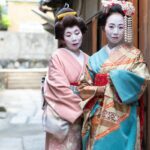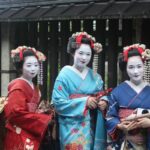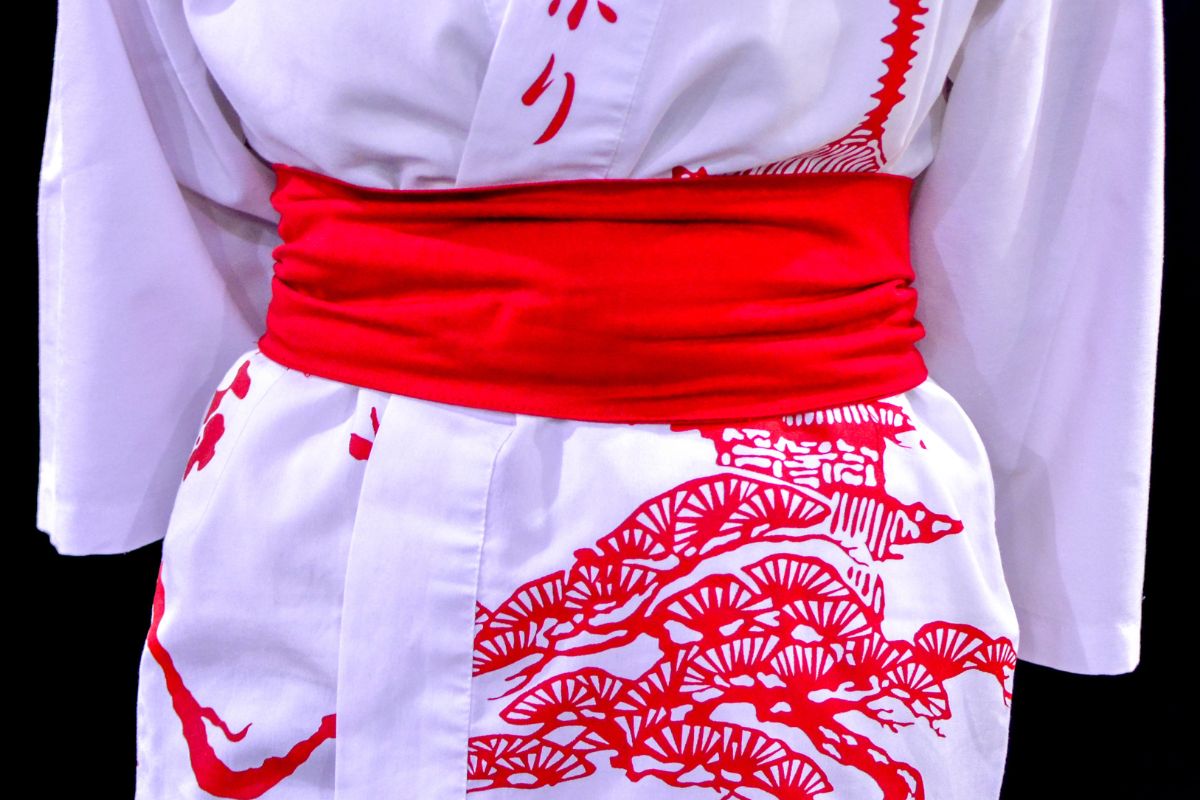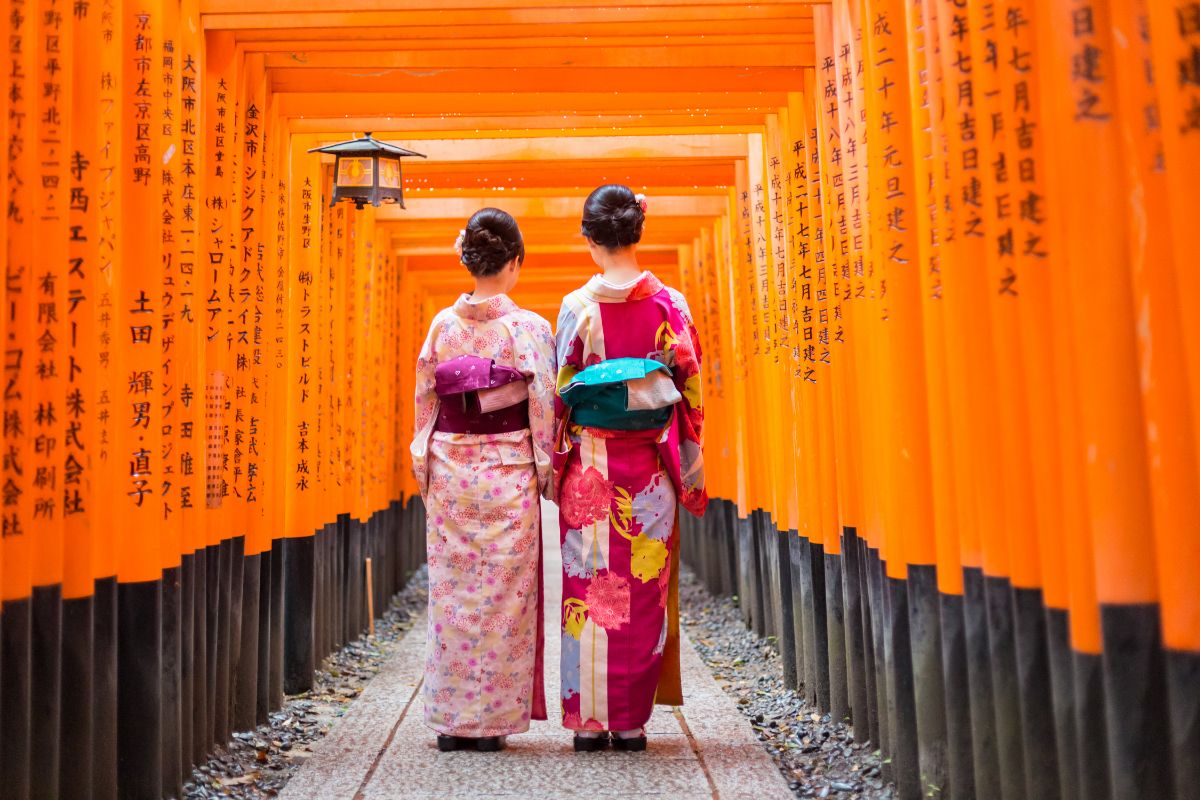In order for a geisha to be fully trained, at least $500,000 is poured into her education and needs. She will need money for hairstyles, kimono, and various other things every geisha will need.
Unlike geisha, the maiko or apprentices will need to go to a hairdresser each week to have their hair styled properly.
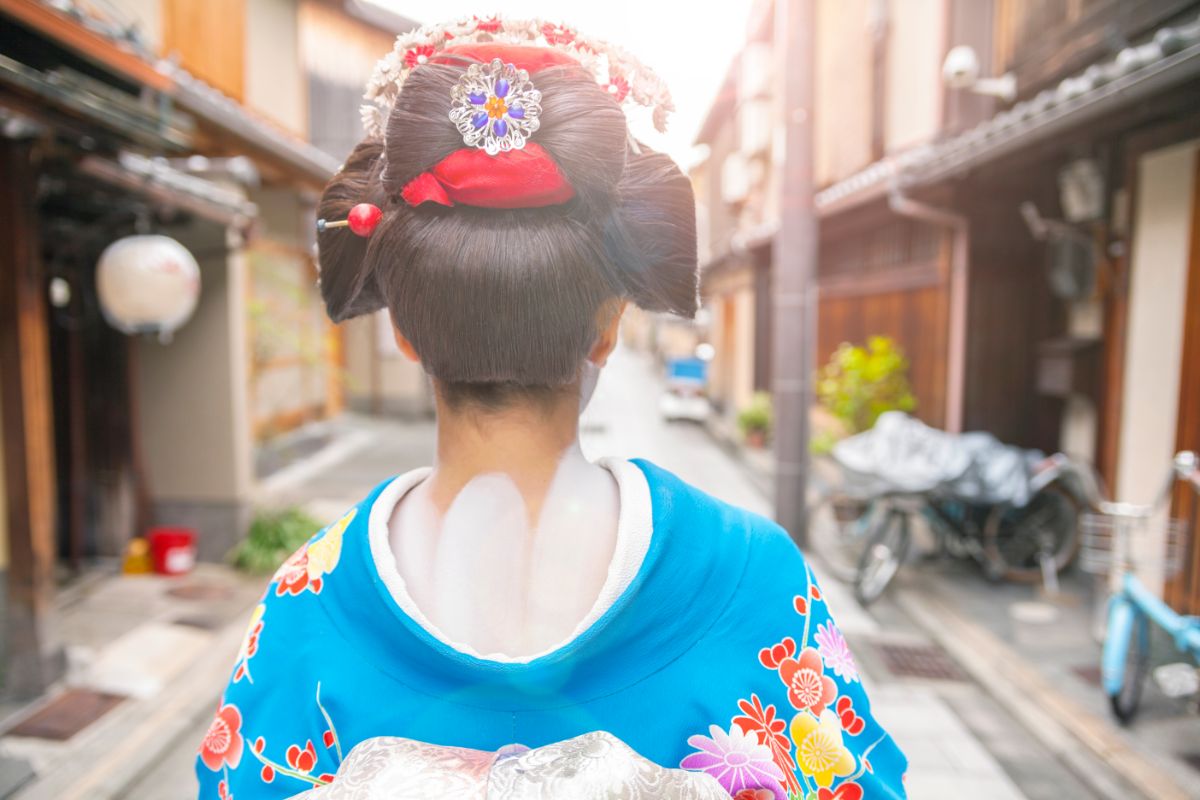
Geisha (see also ‘Why Do Geisha Have White Faces? – Traditional Japanese Makeup Explained‘) may also go to hairdressers but they tend to wear full wigs to big events or clients.
When there are no big events or special appearances a geisha tends to wear her hair in a ‘chignon’.
This hairstyle is deeply rooted in Japanese history. In fact, it is seen in other cultures as well including Greece and China.
The hairstyle a geisha wears is specific to her tank.
The maiko have five hairstyles, three of which are symbolic of what level she is at in her apprenticeship. The other two hairstyles in her arsenal are for special occasions.
Geisha on the other hand will have a minimum of four hairstyles.
On top of the different hairstyles there are different ornaments or ‘kanzashi’ which will change depending on what month it is, what hairstyle they are wearing and what season it is.
With all of that said, let us check out the hairstyles of the maiko and geisha before we take a closer look at what ornaments she will wear and when.
The Seven Main Hairstyles Of A Geisha
As we said above, there are a variety of geisha hairstyles which are symbolic of the rank of geisha or maiko.
In this section we are going to take a closer look at each of these hairstyles so that you can better understand them.
Shikomi
This hairstyle is work by the first level of geisha apprentice. It is worn by sixteen-year-olds and it is worn for only one year.
During this year the maiko will begin their training and learn about the rules of the community. She will also start learning about dance.
This time in maiko’s career is all about observation. She may wear her hair in whatever style she chooses. It cannot but cut though as in order to wear the more elaborate styles she must have long hair.
After Misedashi
After the one-year period a maiko will start experiencing the misedashi. Which is a ceremony that harms her debut as a new apprentice.
At this ceremony the maiko and her sisters will offer sake to each other from three little cups. Each geisha will take three mouthfuls from each cup.
Next the apprentice is given a new name. This name traditionally includes a character from her older sister’s name.
Once the ceremony is complete and the new apprentice has been named, the apprentice will go with her sisters to a banquet and a party where she will be introduced to her geisha sister’s clients.
At this point it is traditional for the clients to give the new geisha gifts. These gifts are at least 10,000 yen. This amount of money is done as a way to celebrate the new maiko’s debut.
The new maiko will visit a hairdresser every week when her hair will be styled and washed. These hairstyles are often achieved by using wads of paper.
The maiko will sleep on an omako which is essentially a wooden box with a small pillow. But doing this her hairstyle will be kept intact as she only washes and restyles her hair once a week.
Warenshinobu
One of the most elaborate hairstyles has to be the warenshinobu. This hairstyle is worn during the first part of training as it is designed to draw attention to the maiko.
It highlights her youth and beauty. The ornaments she wears will change spending on the season and month.
Ofuku
Once an apprentice or maiko gets her first danna or patron she will wear this hairstyle. A danna will support a geisha financially.
Historically danna actually kept geisha as their mistress. In fact, this hairstyle was worn as a symbol of the maiko losing her virginity or as a symbol of her being a mistress.
In fact, this hairstyle may have been a little embarrassing to a geisha but it is unclear whether this is actually true.
But times have changed since then. For modern geisha this hairstyle is worn as a symbol of a geisha reaching her 18th birthday or as a symbol of her completing her third year of apprenticeship and training.
Sakko
During the Edo period this hairstyle was typically worn by wives. In the geisha community it is work for the erikae ceremony and marks the end of a maiko’s apprenticeship.
The Sakko hairstyle is worn for only one month.
Yakko-Shimada
This hairstyle is only worn during special occasions such as New Years. It is most frequently accompanied by special ornaments and ornaments that are made from rice.
Katsuyama
This hairstyle is usually worn for the Gion festival which takes place in July. The name came from a dancer who was alive back in the Edo period.
Once a geisha has reached her apprenticeship she will be allowed to wash her hair regularly and she will be able to sleep on a normal pillow.
Geisha will need to have at least three wings of their own that they can wear for different occasions. Each wig can cost upward of 100,000 yen each. But they will be made using human hair and are made especially for geisha.
On top of that each of these wigs will need to be taken to a wigmaker once a month. This is where they will be cared for and made to look fresh.
The Kanzashi Or Hair Ornaments
We have talked a great deal about the wigs and hairstyles of the geisha. But what about the ornaments? There are a ton of ornaments which work at different times of year.
In this section we are going to take a closer look at some of them. So, let’s dive right in and get started!
- New Year Celebrations – Rice Stalks are worn at New Year celebrations. This kanzashi has been traditional for centuries.
- January – The ornaments for January will be different each year. But they represent something important within the New Year.
- February – During this month geisha will wear plum blossoms as this is the time of year that they will start to bloom.
- March – During this month geisha and maiko will wear butterflies and rape blossoms in their hair.
- April – During this month geisha and maiko will wear butterflies and cherry blossoms in their hair
- May – During this month geisha and maiko will wear purple wisteria and irises in their hair.
- June – During this month geisha and maiko will wear two kanzashi which will be willows, pink flowers and hydrangea.
- July – During this month geisha and maiko will wear a different kanzashi every year. But you will often see fans during this month.
- August – During this month geisha will wear a silver kanzashi while the maiko will wear a pink kanzashi.
- September – During this month geisha and maiko will wear the Chinese bell flower in their hair.
- October – During this month geisha and maiko will wear chrysanthemums in their hair as kanzashi.
- November – During this month geisha and maiko will wear scarlet maple leaves in their hair as they mark the change from fall to winter.
- December – During this month geisha and maiko are doing a lot of things surrounding rice cakes and tree decorating.
Final Thoughts
We hope that you have enjoyed reading this article and learning about what geisha wear in their hair. There is plenty more to learn in his topic so if you want to learn more make sure to do a little extra research.
Goodbye for now and have a wonderful day.
- How Much Money Can You Make Teaching English in Japan? - December 12, 2022
- The Best Places to Teach English in Japan - December 9, 2022
- The Best Credentials for Teaching English in Japan - December 8, 2022

